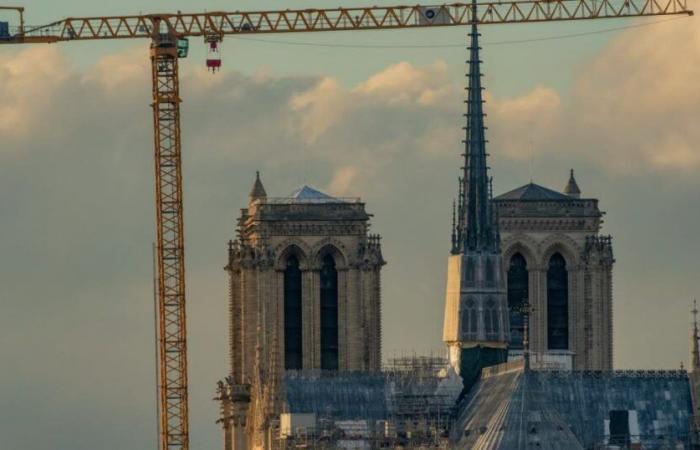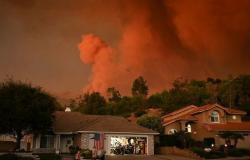Five years after the disaster at Notre-Dame de Paris, which is due to reopen on December 8, the security plans of the 87 cathedrals owned by the State have been reviewed, new measures which must preserve these buildings from the flames. “The fire in Paris was a real awareness that our cathedrals were vulnerable,” says Christine Diacon, regional director of cultural affairs, at the head of the Drac du Centre-Val de Loire. “This created a state of shock which re-sensitized everyone and clarified the different measures to take.”
Across France, each Drac, under the responsibility of the Ministry of Culture, has since updated the security plans for their cathedrals several times, “on a case by case basis”. The objective: to reduce as much as possible “the biggest danger that exists” for these buildings, admitting that “zero risk does not exist”. In addition to these new safety plans, audits have also been commissioned, the results of which will be known next year. “They will make it possible to improve what still needs to be improved,” explains Anne Embs, regional curator of historic monuments, citing for example the installation of fire doors in the attics of cathedrals or the installation of thermal cameras as possible futures. improvements. Points “highly requested” by the ministry, she assures.
“React effectively”
But much has already been done, and the review of security plans has proven very useful, “two of the region's cathedrals, Orléans and Chartres, currently display reference levels, and the other three have received favorable opinions” , agrees Anne Diacon.
Awareness did not only concern the improvement of the protection of buildings but also of works: cathedrals had to adopt a plan to safeguard cultural property. Another major work was carried out on the deficiencies in terms of human surveillance, good reflexes can sometimes save precious minutes. Concerning the Sainte-Croix Cathedral of Orléans, training took place for the sacristans and volunteers “to enable them to react most effectively to avoid “the same worst-case scenario””, declares the administrator of the Sainte-Croix cathedral of Orléans. Orléans Yann de Pinieux.
But everyone recognizes that it is during work periods that the risk of fire remains greatest. HAS Notre-Dame de Paris, or more recently with Rouen Cathedral last July, it was during restoration phases that the fires broke out. “We are aware of this danger,” assures Christine Diacon. “We are trying to further clarify the safety programs during work periods.”
“We are ready”
Thus, the new protocol provides for “very strong measures to support this site”, in particular isolation of the area, an independent fire detection system or a 24-hour human presence on the site.
The firefighters, too, were completely integrated into the equation. In each cathedral, they intervene regularly so that each firefighter can tame these very special buildings as much as possible.
All the barracks also discuss their experiences and try to pool their equipment. The purchase of a large 60m ladder shared between several departments in the Center region is being studied.
Above all, “before the fire in Paris, doubts had to be resolved when the fire alarm was triggered, before the firefighters left on site”, recalls Franck Maillard, head of the SDIS prevention group in Loiret. “Today, this is no longer the case. In about ten minutes, we would have a group to intervene on the Orléans building.” Recent adjustments, according to him. “We really took advantage of the fire, unfortunately, to say to ourselves, what would we have done? », says Franck Maillard. “Today, we are really ready to face this type of disaster.”
France






